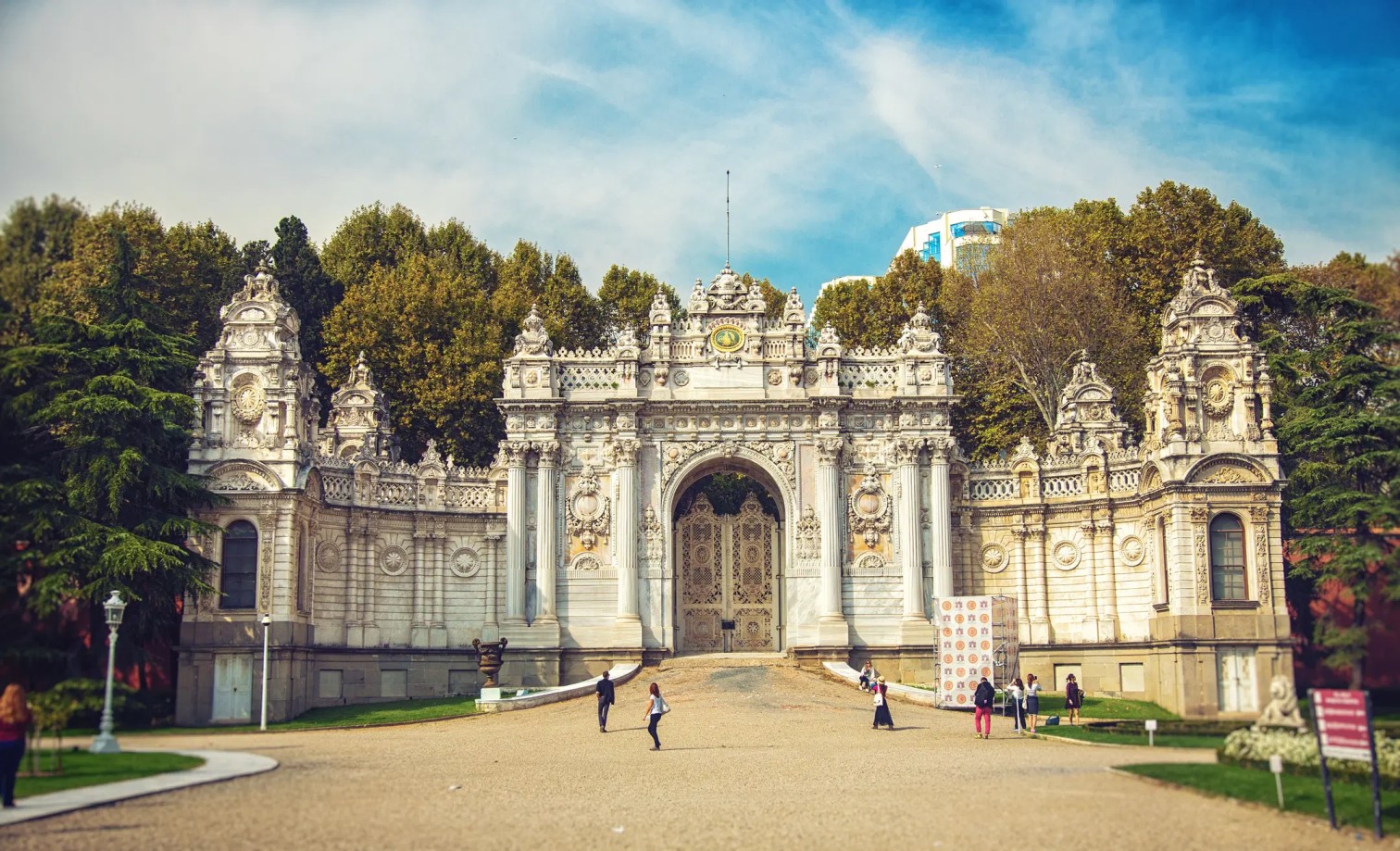Palaces are architectural marvels that reflect the grandeur of different eras, cultures, and royal legacies. These majestic structures not only serve as the residences of monarchs but also as symbols of national pride, cultural heritage, and architectural brilliance. Here are eight of the most famous palaces in the world that continue to captivate visitors with their opulence and historical significance.
1. Dolmabahçe Palace, Turkey
Located on the European coast of the Bosphorus in Istanbul, Dolmabahçe Palace is one of the most magnificent structures in Turkey. Built in the 19th century, it served as the administrative center of the Ottoman Empire and the residence of its last six sultans. The palace is renowned for its lavish interiors, including the grand Ceremonial Hall with its stunning crystal chandeliers and opulent furnishings. The blend of Ottoman and European architectural styles gives Dolmabahçe its unique character. Visitors are particularly drawn to the palace’s luxurious rooms and the breathtaking view of the Bosphorus Strait from its terraces.
2. Palace of Versailles, France
The Palace of Versailles, located just outside of Paris, is perhaps the most famous palace in the world. Originally a hunting lodge, it was transformed by King Louis XIV in the 17th century into a symbol of absolute monarchy. The palace’s Hall of Mirrors, with its 357 mirrors reflecting the sunlight from the windows, is an iconic sight. The vast gardens, designed by André Le Nôtre, are masterpieces of landscape architecture. Versailles is a UNESCO World Heritage site and a powerful symbol of the grandeur of the French monarchy. Today, it is one of the most visited landmarks in France, attracting millions of tourists every year.
3. Buckingham Palace, United Kingdom
Buckingham Palace in London is not just the residence of the British monarch but also the administrative headquarters of the royal family. With its neoclassical façade and opulent State Rooms, the palace is a significant symbol of the British monarchy. The Changing of the Guard ceremony, held in front of the palace, is a popular tourist attraction. Inside, visitors can explore the State Rooms during the summer months, including the Throne Room, the White Drawing Room, and the Picture Gallery. The palace’s rich history and its role in British culture make it a must-visit for anyone interested in royal heritage.
4. Winter Palace, Russia
The Winter Palace, located in Saint Petersburg, is a masterpiece of Russian Baroque architecture. It served as the official residence of the Russian emperors from 1732 until the Russian Revolution in 1917. The palace is now part of the Hermitage Museum, one of the largest and oldest museums in the world. The Winter Palace’s green-and-white façade, with its elaborate decorations, reflects the grandeur of the Russian Empire. Inside, the State Rooms are filled with priceless works of art, including paintings by Rembrandt, Michelangelo, and Leonardo da Vinci. The palace is a symbol of Russia’s imperial past and a treasure trove of world art.
5. Topkapi Palace, Turkey
Another gem in Istanbul, Topkapi Palace was the primary residence of the Ottoman sultans for almost 400 years. Built in the 15th century by Sultan Mehmed II, it is a sprawling complex of courtyards, pavilions, and gardens. The palace is famous for its exquisite tilework, the Harem, and the Treasury, which houses the legendary Topkapi Dagger and the 86-carat Spoonmaker’s Diamond. Topkapi Palace offers a glimpse into the opulent lifestyle of the Ottoman court and is a UNESCO World Heritage site. The panoramic views of the Bosphorus and the Golden Horn from the palace are simply breathtaking.
6. Alhambra, Spain
Perched on a hill overlooking the city of Granada, the Alhambra is a stunning example of Moorish architecture. Originally built as a fortress in 889 AD, it was later converted into a royal palace by the Nasrid dynasty in the 13th century. The Alhambra is renowned for its intricate tilework, stucco decorations, and lush gardens. The palace’s most famous sections are the Nasrid Palaces, the Generalife gardens, and the Alcazaba fortress. The Alhambra’s beauty and its historical significance as the last stronghold of Muslim rule in Spain make it one of the most visited palaces in the world.
7. Forbidden City, China
The Forbidden City in Beijing is one of the largest and most well-preserved palaces in the world. It served as the imperial palace for 24 emperors during the Ming and Qing dynasties. The complex consists of nearly 1,000 buildings, featuring traditional Chinese architecture with golden roofs, red walls, and intricate carvings. The Hall of Supreme Harmony, the largest hall in the Forbidden City, was the site of many important ceremonies. The palace’s layout, designed according to feng shui principles, reflects the hierarchical structure of Chinese society. Today, the Forbidden City is a UNESCO World Heritage site and a symbol of China’s imperial history.
8. Potala Palace, Tibet
The Potala Palace in Lhasa, Tibet, is an architectural wonder that stands at an altitude of 3,700 meters above sea level. Originally built in the 7th century, it was reconstructed in the 17th century by the 5th Dalai Lama and served as the winter palace of the Dalai Lamas until the 14th Dalai Lama fled to India in 1959. The palace’s white and red walls, rising majestically against the backdrop of the Himalayas, are an iconic sight. The Potala Palace is not only a symbol of Tibetan Buddhism but also a UNESCO World Heritage site. Its chapels, tombs, and prayer halls house thousands of religious artifacts and scriptures.
